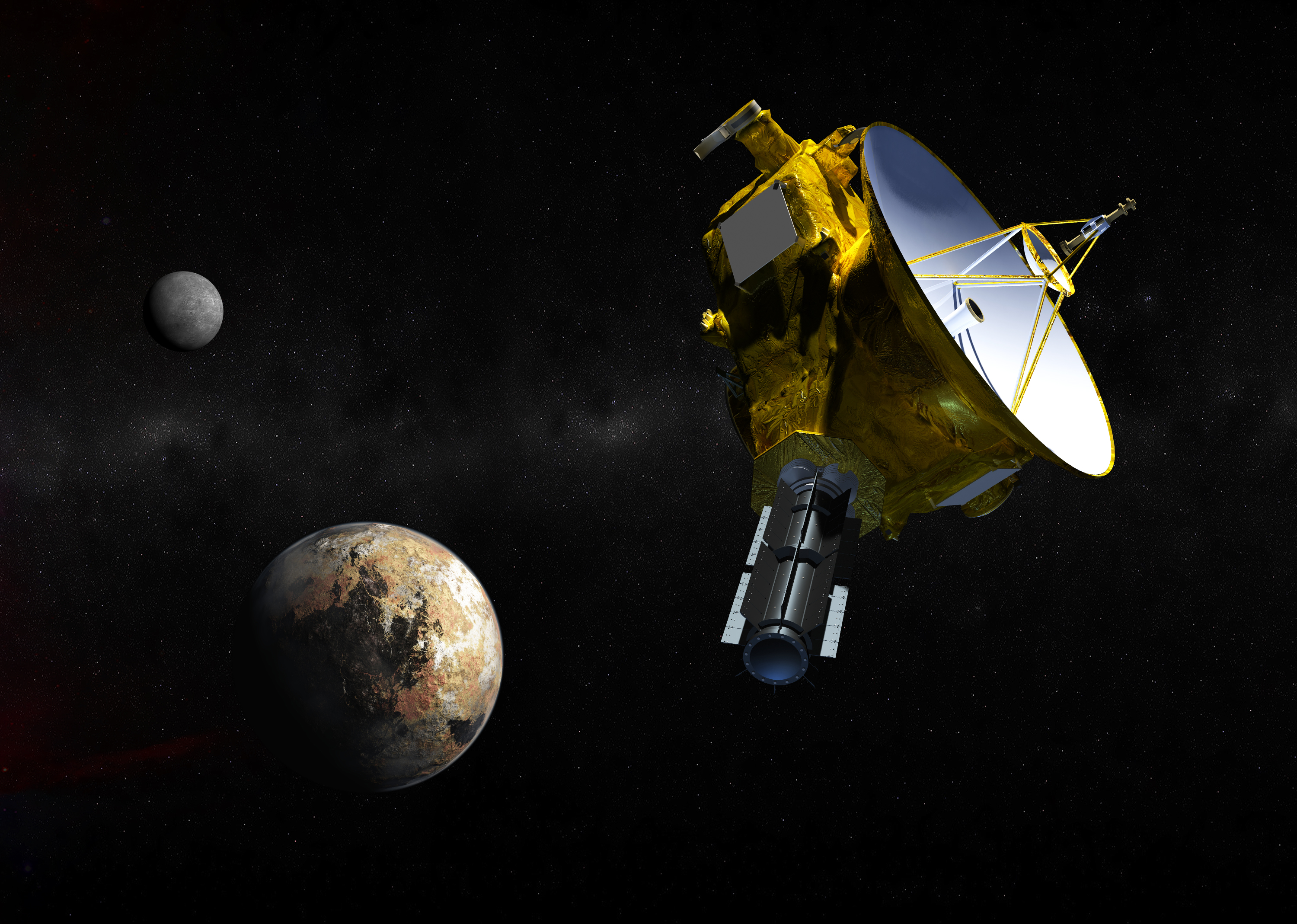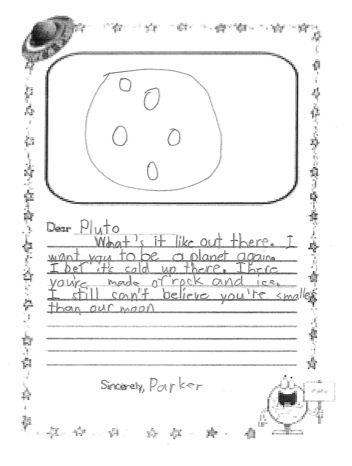'Dear Pluto': Campaign Asks Kids to Say 'Hi' to Dwarf Planet

Kids around the world can say hello to Pluto ahead of the first-ever flyby of the dwarf planet this summer.
A campaign called "Dear Pluto" is asking children to submit greetings to the dwarf planet, both in written and video form. The idea is to help generate excitement about the solar system and space science — especially NASA's New Horizons mission, which will capture the first up-close looks at Pluto during a July 14 flyby that brings it within just within 7,800 miles (12,500 kilometers) of the frigid world.
"My goal is to create excitement and engagement and scientific literacy. I want to make science entirely palatable," said Janet Ivey of the website Janet's Planet, which is running the Dear Pluto project. [Photos of Pluto and Its Moons]
The New Horizons mission is perfect for this purpose, she added, since it will soon lift the veil on a world that has remained mysterious since its 1930 discovery.
"To me, it's a grand adventure story," Ivey told Space.com. "We don't know what we're going to find."
The Dear Pluto campaign got its start after Ivey gave a presentation about the solar system to a class of third-graders, she said. The kids asked lots of questions, and Ivey challenged them to write to New Horizons principal investigator Alan Stern with their ideas about Pluto's planethood status. (Pluto was originally deemed one of the solar system's nine planets, but the International Astronomical Union demoted the object to "dwarf planet" status in 2006.)
The children responded enthusiastically, Ivey said, inspiring her to reshape the project and take it to a broader audience. The Dear Pluto campaign — which launched in the early-April timeframe and will run through July 10 — solicits submissions with a simple and open question: "What would YOU like to ask Pluto?"
Breaking space news, the latest updates on rocket launches, skywatching events and more!
Ivey said that she has received more than 1,000 letters and 100 videos so far. Most submissions are from the United States, but kids from as far afield as Trinidad, India and Pakistan have contributed as well, Ivey said.
"Dear Pluto: Did you hear? You're going to have your picture taken — a very important picture," a girl named Ella says in her video submission. "I can't wait to see those pictures. Smile, Pluto! Cheese!"
Alan Stern is excited about the Dear Pluto project and has been very supportive of it, Ivey said. In fact, Stern even recorded his own video message for the campaign. (While Dear Pluto is aimed primarily at engaging children, it's open to people of all ages.)
"Dear Pluto: We have been wanting an opportunity to come and visit and to see what you're all about and to explore you scientifically — and all of your moons— for so long, and so many people have worked so hard," Stern says in his video. "I can't wait to see what you're like in July."
To learn more about the Dear Pluto project, visit the Janet's Planet website here: http://janetsplanet.org/dear-pluto/
Follow Mike Wall on Twitter @michaeldwall and Google+. Follow us @Spacedotcom, Facebook or Google+. Originally published on Space.com.

Michael Wall is a Senior Space Writer with Space.com and joined the team in 2010. He primarily covers exoplanets, spaceflight and military space, but has been known to dabble in the space art beat. His book about the search for alien life, "Out There," was published on Nov. 13, 2018. Before becoming a science writer, Michael worked as a herpetologist and wildlife biologist. He has a Ph.D. in evolutionary biology from the University of Sydney, Australia, a bachelor's degree from the University of Arizona, and a graduate certificate in science writing from the University of California, Santa Cruz. To find out what his latest project is, you can follow Michael on Twitter.


